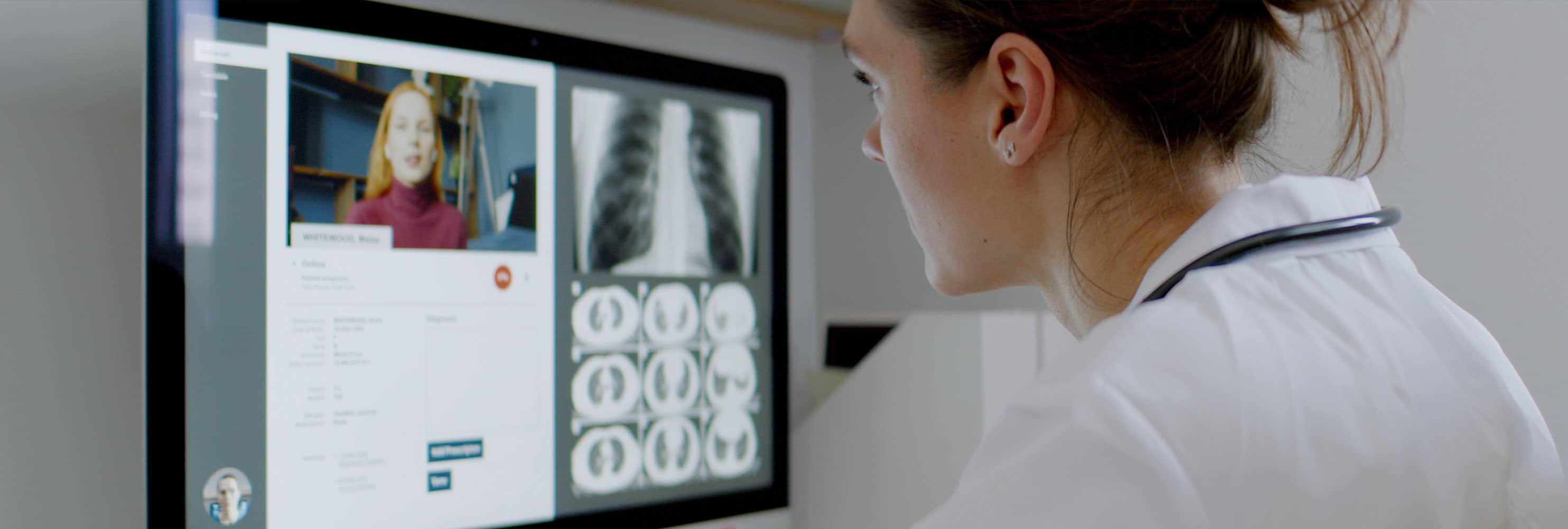
Why Practices Should Still Utilize Telehealth Amid COVID-19
COVID-19 prompted a widespread adoption of telehealth solutions across the country. Pro...
April 27, 2020
With the rise of coronavirus cases across the United States, there has also been a rapid rise in the utilization of telehealth technology. The Centers for Medicare and Medicaid Services (CMS) lifted restrictions on telemedicine, making it simpler for patients to engage in virtual care while also introducing over 80 new services for providers to earn reimbursements.
Despite social distancing advice, providers are able to offer life-saving care to patients who depend on it through virtual visit technology. With telehealth, providers can check-in on high-risk patients, assess their needs, and form a treatment plan, just as they would in-person, without the risk of transmitting COVID-19.
Check-in on Sicker Patients with Telehealth
Telehealth has enabled providers to not only visit with patients despite the pandemic, but it has also offered a window into their living situations which were previously hard to assess. With a video visit, a physician can better understand some of the key impacting factors of a patient’s health that they were previously unable to. With telehealth, providers can access the following situations:
1) Living Conditions
During a virtual visit, providers can evaluate the patient’s living situations to determine if they have access to what they need to stay safe and well during the pandemic. Once the pandemic is over, telehealth will help providers assess living conditions for patients who might need remote care or referrals to services that can help them at home.
2) Safe Housing
An important question for many sick patients is whether or not they have access to safe housing. This does not only refer to the neighborhood they live in, but if their home is safe for them to move around in, receive care in, and more. For example, a telehealth visit can help a provider assess if a patient is at risk for falling and whether or not they have an effective solution for getting around their home.
3) Risk Factors
Risk factors can include many different determinants that impact a patient’s ability to stay healthy and safe. These might include pets that exacerbate their health conditions, stairs that put them at risk for falling, access to food, and more. Telehealth gives providers the opportunity to assess these risk factors and determine if the patient is experiencing anything that could negatively impact their health should it not be resolved.
4) Social Support
Lastly, telehealth is helping physicians assess whether or not a patient’s home has evidence of social support. This might include family or friends coming over to help them, community members checking-in on them, or any other social support that helps prevent feelings of isolation for sick patients. While this might not be a priority concern during the coronavirus, these things will be important to evaluate for once it is over.
Quicker Physician-Patient Connection
Due to the rapid use of telehealth during the coronavirus pandemic, telehealth has proven its ability to make the physician-patient connection more efficient without sacrificing the quality of interactions. With telehealth, patients can avoid travel and wait times by checking in on their computer moments before their visit. Providers can see more patients in one day with virtual visits, empowering them to spend more one-on-one time with each patient while also billing for more services.
To learn more about a telehealth solution that can help your practice during the coronavirus and after, click here.